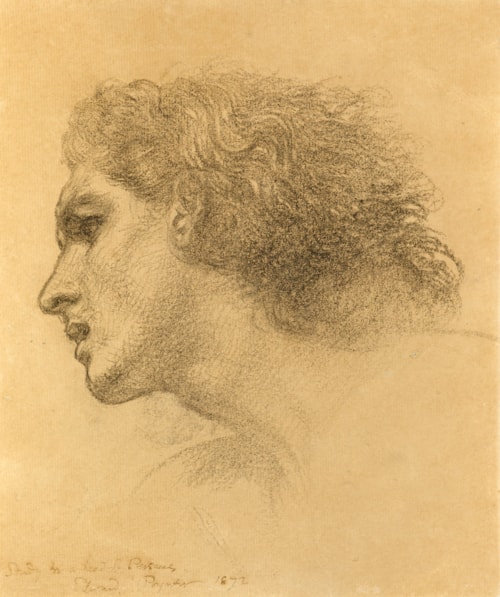
Edward John POYNTER
Paris 1836 - London 1919
Biography
One of the leading artistic figures of Victorian England, Edward Poynter made his reputation as a painter of historical subjects, often set in ancient times, in which precise archeological detail, interesting narrative themes and a polished technique were combined with great effect. His first success came with the painting Israel in Egypt, exhibited at the Royal Academy in 1867, and his reputation continued to rise throughout his career, enhanced by such popular paintings as A Visit to Aesculapius, painted in 1880. His grandest production was the monumental The Visit of the Queen of Sheba to King Solomon, painted between 1883 and 1890 and today in the Art Gallery of New South Wales in Sydney, Australia. Among the public commissions he received were for the decoration of the interior of the Palace of Westminster and the Royal Albert Hall.
Poynter also worked in watercolour and fresco, and made designs for stained glass, mosaic and ceramics. Apart from being the first Slade Professor of Art at University College in London, Poynter was appointed Director of the National Gallery in 1894 (the last artist to hold the position) and, from 1896, served concurrently as President of the Royal Academy.
A versatile and gifted draughtsman and a firm advocate of life drawing, Poynter made numerous figure studies for each of his paintings. His drawings were greatly admired in his lifetime. As one recent scholar has noted, ‘By the late 1860’s Poynter’s graphic work was renowned for its excellence, and by the 1880s he was hailed by his contemporaries as the finest British figure draughtsman of his time.’ One contemporary writer, in a book devoted solely to the artist’s drawings, noted of Poynter’s preparatory studies for his paintings that ‘In the bold vigour of his generalizations, in the minute and searching attention to details, and in the broad and masterly use of the material, be it charcoal, chalk, or pencil, we perceive how conscientiously he has laid to heart the example long since set by Michel Angelo.’






